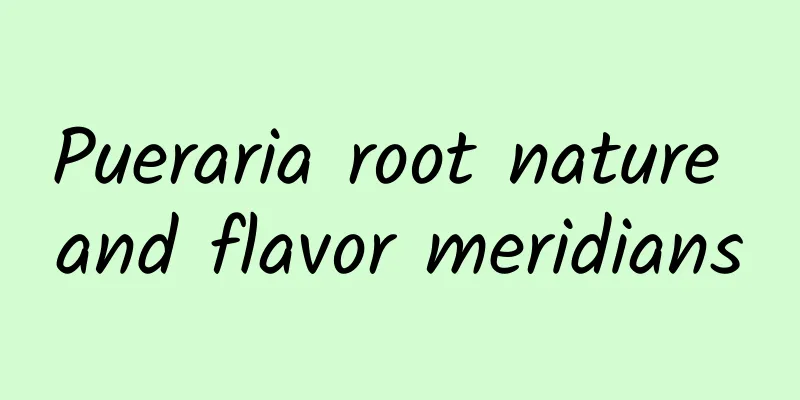What are the differences between Codonopsis pilosula and white ginseng?

|
White ginseng, also known as ginseng, has certain differences from Codonopsis pilosula, mainly in terms of appearance, nature, taste and efficacy. The main effects of Codonopsis pilosula are in tonifying the middle and replenishing Qi, strengthening the spleen and benefiting the lungs, while the main effects of White ginseng are in regulating the central nervous system, improving memory, improving heart function, and lowering blood sugar. 1. Introduction to Codonopsis Codonopsis: Appearance: Codonopsis pilosula is mostly long conical. The roots are thick and slightly thin, with few branches. Due to different growth years, the roots are 8 to 30 cm long and 0.5 to 2.5 cm in diameter. The surface is gray-brown or gray-brown. The terminal base mark degenerates over the years or becomes honeycombed, commonly known as "lion's head". There are dense circular transverse wrinkles near the reed head, which gradually become sparse downwards, accounting for about half of the whole. The whole body has deep longitudinal wrinkles and transverse root marks. The skin is loose and the flesh is tight. It is hard, light, elastic and easy to break. The cross section is light yellow-brown, the outer skin is tortuous and has cracks or radiating patterns, varying in tightness, with a yellow center in the middle, and small and dense holes with a unique smell, sweet and rich taste, and no residue when chewed. Nature and flavor: neutral in nature, sweet and slightly sour in taste, enters the spleen and lung meridians. Effect: Replenishing Qi. Tonify the middle and replenish qi, strengthen the spleen and benefit the lungs. It is mainly used to treat spleen and lung weakness, shortness of breath and palpitations, poor appetite and loose stools, asthenia and cough, internal heat and thirst, and blood deficiency and sallow complexion. Codonopsis pilosula can be said to be one of the most commonly used medicinal herbs in life. Because its medicinal effect is weaker than that of ginseng, it has the effect of nourishing blood, so it is very suitable as a tonic product and can be used for general chronic weak diseases. It is especially suitable for people with weak constitution, insufficient qi and blood, sallow complexion, and those who are weak after illness or childbirth, with symptoms such as spleen and stomach qi deficiency, fatigue, limb weakness, poor appetite and loose stools, chronic diarrhea, insufficient lung qi, cough and shortness of breath, qi deficiency and weakness, and susceptibility to colds. 2. Introduction of White Ginseng Appearance: Ginseng is a perennial herb with a taproot 30-60 cm high, thick, fleshy, yellow-white, cylindrical or spindle-shaped, slightly branched below; the rhizome (reed head) is short and erect. Nature and flavor: sweet, slightly bitter, warm and neutral. It enters the spleen, lung and heart meridians. Efficacy: replenishes Qi, consolidates the body, promotes the production of body fluids, soothes the mind, and improves intelligence. Indications: physical weakness and imminent collapse, cold limbs and weak pulse, spleen deficiency and poor appetite, lung deficiency with wheezing and coughing, thirst due to loss of body fluids, internal heat and polydipsia, weakness due to long-term illness, palpitations and insomnia, impotence and cold uterus; heart failure, cardiogenic shock. It is used for shortness of breath, palpitations, forgetfulness, thirst, sweating, poor appetite and weakness, all acute and chronic diseases, and shock and collapse caused by blood loss. It greatly replenishes vital energy, consolidates the body, produces body fluids, and calms the mind. It is used to treat exhaustion, loss of appetite, fatigue, nausea and vomiting, loose stools, weak cough and shortness of breath, spontaneous sweating and sudden collapse, palpitations, forgetfulness, dizziness and headache, impotence, frequent urination, thirst, metrorrhagia in women, slow fright in children, and long-term weakness, and all symptoms of insufficient qi, blood, and body fluids. Ginseng's functions and effects: 1. Regulate the central nervous system Ginseng can regulate the central nervous system, improve the excitation and inhibition process of the brain, and make it tend to be balanced; it can improve the ability of mental and physical labor and has an anti-fatigue effect. Ginseng can enhance the excitatory process of the cerebral cortex, and also enhance the inhibitory process of the cerebral cortex. 2. Improve memory The active ingredients in ginseng that enhance memory are ginsenosides, the main ones being ginsenosides Re, Rb1 and Rg1. Experiments show that ginsenosides promote the learning and memory process of normal rats, and have a significant improvement effect on memory impairment caused by electric shock in rats. 3. Improve heart function Ginseng can increase myocardial contractility, slow down heart rate, increase cardiac output and coronary blood flow, and resist myocardial ischemia and arrhythmia. It has certain effects on heart function, cardiovascular system and blood flow. Ginseng has obvious anti-hypoxia effect and can effectively regulate sinus arrhythmia. Ginsenosides have the effects of reducing blood viscosity, lowering erythrocyte sedimentation rate, anti-platelet aggregation, anti-coagulation, and anti-thrombosis. They can also accelerate lipid metabolism and have a significant effect in lowering cholesterol. Small doses of ginseng can slightly increase the blood pressure of anesthetized animals, while large doses can lower blood pressure. Experiments have shown that ginseng can enhance the function of animal hearts and improve myocardial weakness during ventricular fibrillation. 4. Hypoglycemic effect Ginseng contains ginsenosides and ginseng polysaccharides. In particular, ginsenosides Rb2 and Re have obvious blood sugar lowering effects. In addition, ginseng polysaccharides and ginseng glycopeptides are also blood sugar-lowering ingredients in ginseng. |
<<: What are the differences between roasted Astragalus and Astragalus?
>>: What are the effects and ways to eat saffron?
Recommend
The efficacy and function of sandglass
Speaking of the sandalwood, I believe many friend...
Weekly Science and Technology Talk | This "clairvoyance and super hearing" can help us better detect marine disasters
Among various oceanographic instruments, ocean bu...
The efficacy and function of blood clotting
There are many types of medicines, so the choice ...
Musk's effects
Traditional Chinese medicine has always been the ...
The efficacy and function of roxburghii root
In fact, the occurrence of many human diseases is...
The efficacy and function of loquat
Loquat is a very common Chinese medicine and is a...
Can the fruit of the cactus be eaten?
Can the fruit of cactus be eaten? This question c...
Salute! Workers who stick to their jobs during the holidays
Traffic police, firefighters, armed police office...
Why is the coconut juice we have been drinking since childhood completely different from coconut water?
When you mention coconut, you may think of all ki...
Of the five generals of Shu Han, two died in an accident, three died of depression, and almost all of them died without descendants.
During the late Han Dynasty and the Three Kingdom...
You saved the calf with good intentions, but ended up causing the calf to be euthanized?
In Yellowstone National Park in the United States...
How to make dodder soaked in water
Cuscuta australis is a common Chinese herbal medi...
150 years of exploration has created the "Gold-touching legend", niobium (ní) is really amazing!
The Chinese Academy of Sciences and the Qinghai P...
Space experiments are not afraid of being "exposed", how many tricks do you know?
Recently, the space radiation biology exposure ex...
The efficacy and function of the root of old jatropha
The root of Crow's Gall is a traditional Chin...









